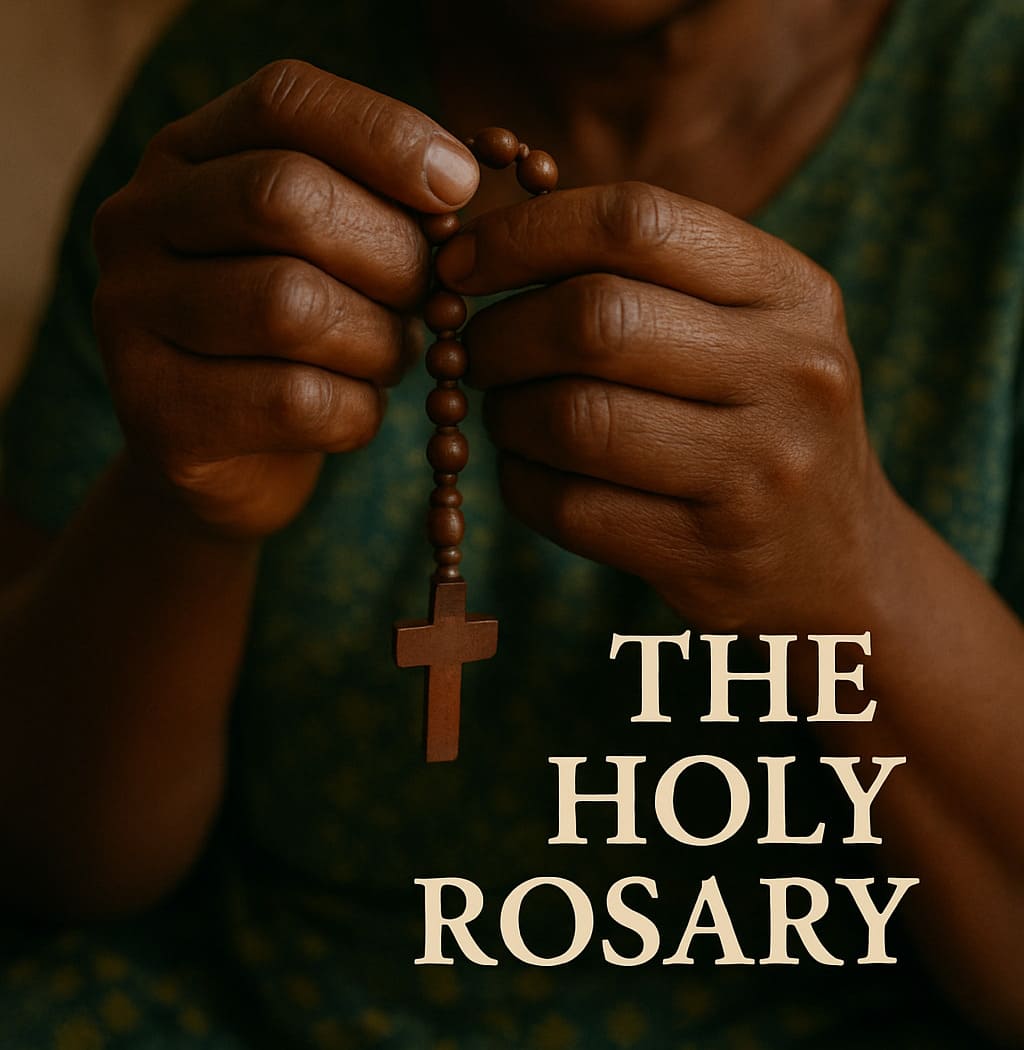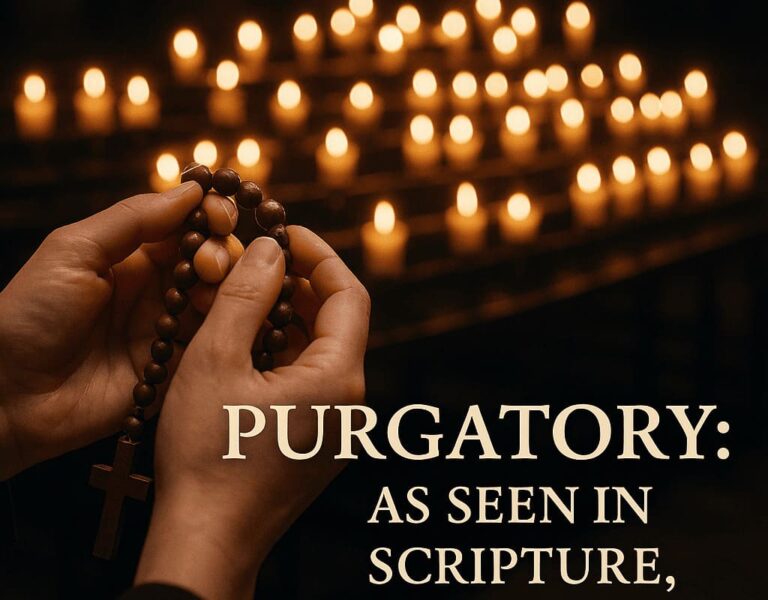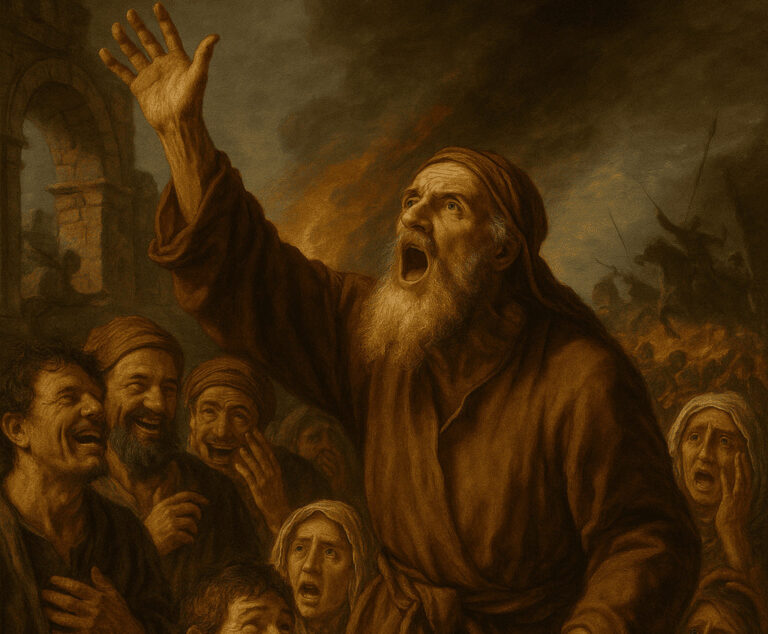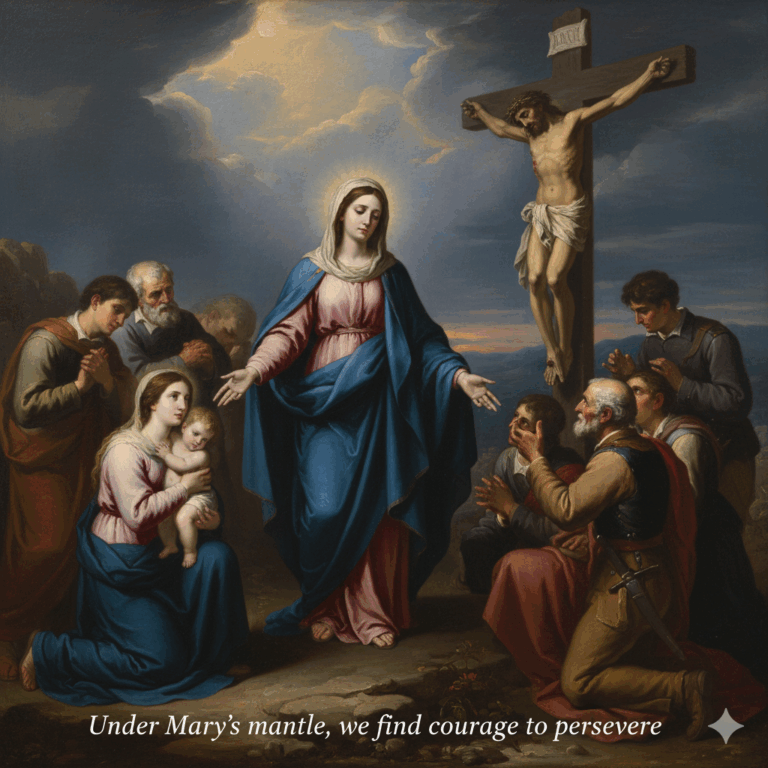Editor’s Introduction: We often hear the saying, “health is wealth.” While we focus on our physical and mental well-being, what about our spiritual health? In a world filled with noise and distractions, how do we find the focus and peace necessary to care for our souls?
In this heartfelt article, author Martin Umengwu presents the Holy Rosary as one of the most cherished and powerful tools for spiritual wellness within the Catholic tradition. He explores its rich history, its scriptural roots, and its profound significance as a meditative journey to the heart of Jesus Christ, through the eyes of His mother, Mary.
A Remedy for the Soul
There’s a saying that “health is wealth.” If this is true for our bodies, it is even more necessary to take care of our spiritual health. But what is the best way to do this? For centuries, devotion to Our Lady through the Holy Rosary has been highly recommended as a sure path that leads us directly to the heart of Jesus.
What is the Rosary and Where Does it Come From?
Some may ask if this prayer is contained in the Bible. History shows that the Rosary is a distinctly Roman Catholic prayer which centres on meditating and reflecting on the life of Christ and His Blessed Mother.
Its origins are ancient. Early Christians, including the Desert Fathers in the 3rd and 4th centuries, used prayer ropes with knots to count their prayers, such as the Our Father and the 150 Psalms. According to Catholic tradition, the Rosary in its current form was given by the Virgin Mary herself in an apparition to Saint Dominic in the 13th century.
But are its words found in Scripture? Absolutely. The foundational prayer of the Rosary, the Hail Mary, comes directly from the Word of God. It was God who composed the first part of this prayer and put it in the mouth of the Archangel Gabriel to say to Mary: “Hail, full of grace, the Lord is with you” (Luke 1:28). Her very person is “full of grace,” because the perfection of God’s creation is made manifest in her.
The Power of a Misunderstood Prayer
One may say that the Rosary is a dull or repetitive prayer. Far be it from us to say such a thing about a prayer that has wrought so many wonders. Its power is prophesied in the first book of the Bible: “I will put an enmity between you and the woman” (Genesis 3:15).
The author laments that in many families, this powerful aid is no longer sought after, viewing this neglect as a sign of the devil’s guiles. He asks if we shall fall prey to a modern, technocratic mindset—and a Protestant theological framework that largely set aside Marian devotions—which he sees as having eaten deep into the world.
The words of Our Lady to the three shepherd children at Fatima underscore this urgency:
“Many souls go to hell because they don’t have anyone to pray for them.”
It is evident how the world can desert its loving Mother to seek after things that draw it far from God. Yet, the Church’s confidence in her remains. As Pope Leo XIII wrote in 1895:
“The mightiest helper of the Christian people and the most merciful, is the Virgin Mother of God. How fitting it is to accord her honours ever increasing in splendor, and call upon her aid with a confidence daily growing more ardent.”
History itself bears witness to the Rosary’s power: from the victory of the Christian fleet at the Battle of Lepanto, attributed to the intercession of Our Lady of the Rosary, to the countless heresies it has helped to overcome. It continues to be a lifeline that leads sinners back to the heart of Jesus her Son.
An Invitation to Pray
The Rosary can be made known to all people through simple acts of charity: by sharing rosaries with others, distributing pamphlets that explain how to pray it, and holding conferences that explore its depths. Most importantly, it is shared by praying it. Through this simple, profound prayer, we invite Mary, our spiritual health, to lead us ever closer to her Son.
The Mysteries of the Rosary
The Rosary is not just a repetition of prayers, but a structured meditation on the life of Jesus and Mary. The prayers are the “soundtrack” to a mental “movie” of the Gospel. The meditations are grouped into four sets of five “Mysteries”:
- The Joyful Mysteries: The Annunciation, Visitation, Nativity, Presentation, and Finding of Jesus in the Temple.
- The Luminous Mysteries: The Baptism of Jesus, the Wedding at Cana, the Proclamation of the Kingdom, the Transfiguration, and the Institution of the Eucharist.
- The Sorrowful Mysteries: The Agony in the Garden, the Scourging at the Pillar, the Crowning with Thorns, the Carrying of the Cross, and the Crucifixion.
- The Glorious Mysteries: The Resurrection, the Ascension, the Descent of the Holy Spirit, the Assumption of Mary, and the Coronation of Mary.
Join the Discussion in the Agora
The author has shared a passionate case for a cherished form of prayer. Let’s reflect on this together.
What practices or disciplines do you use to care for your own “spiritual health”?
The author describes the Rosary as a meditation on the life of Christ. How does meditation feature in your own prayer life?
For those unfamiliar with this devotion, what aspect of this explanation did you find most interesting or surprising?
Share your respectful perspective in the comments below.







